| Report Type | Full |
| Peak(s) |
North Maroon Peak - 14,022 feet Maroon Peak - 14,163 feet |
| Date Posted | 09/13/2019 |
| Modified | 09/16/2019 |
| Date Climbed | 08/12/2019 |
| Author | OldTrad |
| Additional Members | handonbroward |
| 2-way Bells Trav: Senior Ridge Curriculum 403 |
|---|
|
2-Way Bells Traverse: Senior Ridge Curriculum 403 Links:
Bells Traverse: Round Trip HB and I were completely locked in on the first leg of our roundtrip Bells Traverse. We were on the initial part of the North to South section, the first half of our intended round trip, we were moving well, and the technical difficulty and exposure, though always present, had been a non-factor as far as I was concerned. My commitment and focus on climbing safely and remaining secure was so acute that the traverse up to this point had hardly even registered as difficult or dangerous. We had been trad-climbing consistently all year and that, combined with our recent experience on Blitzen Ridge, had been excellent preparation for what we were facing now. I was so dialed-in in fact, that while down climbing the first fifth class section (the “Third Challenge” in the route description which describes the traverse in the opposite direction), it didn’t even occur to me that we were navigating through one of the route's cruxes even though we had taken the more difficult and exposed of the two technical alternatives. We had made decent time and progressed to a point where the ridge narrowed and dropped off, and we were looking across the abyss directly at Maroon Peak. I immediately recognized the spot from my study of the route beforehand and knew we were at the “Second Challenge”, likely the crux of the entire route. Because HB is such a strong hiker and climber, and because I essentially had my nose up his a** the entire way up North Maroon (taking full advantage of his experience and knowledge of the route), I had decided beforehand that I would lead the exposed, technical down climb. After all, I had more technical climbing experience, I had developed some confidence while unroped on Blitzen, but most of all I wanted to contribute to the success of our somewhat atypical partnership. The top of this section has a distinctive, upward protruding flake, which extends down past ground-level, forming the east side of a large, south-facing crack/chimney. I started without hesitation and was able to climb securely down to where the crack narrowed. Here, I was forced out and onto the exposed face where I knew the situation would get more difficult. It turns out that on this last point I was 100% correct. I located some solid holds near the base of the wide crack and immediately spotted a large, obvious stance about five feet below. By lowering myself and with the help of an intermediate foothold, I was able get both feet on the stance, but then found myself off-balance due to the way the rock bulged at the bottom of the crack. This put me in a position where my arms were suddenly crucial, and although the climbing did not feel especially strenuous, I was now, to use my own trad-climbing term, “under the gun”. I wasn’t scared, but the situation was very serious. As in my Blitzen report, I think it’s worth exploring the genesis of this situation a bit, again asking how a guy in his early 60s, who isn’t a hardcore mountaineer, and who had been away from technical climbing for over 20 years, could possibly have wound up here? I covered much of this in my report on Blitzen, but the rest is explained by describing what happened during the week of August 5th. After our success on Blitzen, HB and I felt ready for another technical ridge. My personal goals up to this point included Blitzen, Gash Ridge and McHenry’s Arrowhead Arête, though I knew HB was most interested in Gash. Therefore, I was watching the weather forecasts looking for a high-pressure window in the Blanca group so that we could climb Gash, our most coveted goal. Because HB was interested in continuing from Blanca to the North over Ellingwood, along Ellingwood’s North Ridge and all the way to California Peak, it was obvious that a half-day window would be insufficient for an attempt there. As far as the weather was concerned, it seemed that Gash might have to wait until later in the summer. Although I suspect this is true for most people, but speaking only for myself, it’s much easier to think and talk about “big plans” when those plans involve future activities, whereas it’s harder to aggressively pull a plan into the near-term and present, thus making it immediate and real. This is especially true when I have any lurking fears or doubts about whether I can actually succeed on the said objective(s), and isn’t unique to my current alpine climbing, but also manifested when planning more difficult rock routes in my younger years. For instance, it was tempting to think that for Gash or any other equally challenging route, we would need a perfect high-pressure system and anything less would be a non-starter, instead of looking for just enough of a weather window to allow an attempt without waiting. However, I also felt that kind of thinking was a subtle form of procrastination, which would result in very few routes during the already-shortened 2019 season. Sensing that the summer season was in danger of slipping away, I forced myself to consider what might be squeezed into what looked at the time like less-than-perfect early-August forecasts. It turned out that the adoption of this more aggressive mindset forced me to prepare mentally for what would end up being an extended August push through several demanding routes, and put me at an advantage when August suddenly revealed itself as a near-ideal month for climbing. The weekend of August 10 was approaching when, to my surprise, HB mentioned the possibility of the Bells Traverse. Though I had wanted to climb in the Elks at some point, I had avoided suggesting it to HB because I knew he had already spent so much time climbing there, and I wasn’t going to push for anything I felt he would be less interested in doing. Up until that point, I really had no idea that he harbored any interest in the Bells traverse at all. Except for discussions with other friends about Pyramid, I had not yet considered the Bells, let alone the Traverse, but immediately realized we could do it. We watched the forecasts and it looked like a tossup for both Saturday and Sunday. One day looked slightly better for Blanca, the other slightly better for the Bells. But Monday… Monday’s forecast for the Bells was shaping up as a perfect bluebird day. Suddenly, HB came up with the idea to climb North Maroon’s NE Ridge, traverse to South Maroon and back, finally descending the same way we came up. Obviously, this would avoid the notorious terrain that Maroon Peak’s South Ridge so generously offers. Moreover, it would minimize the overall mileage required for the adventure. I thought his idea was brilliant! I would benefit from his familiarity with North Maroon’s technical NE Ridge, and yet I could contribute by route-finding and leading dangerous fifth class down climb and other sections on the traverse that the round-trip would entail. Although I knew that almost everyone who solos the Bells Traverse goes south to north in order to avoid exposed fifth-class down climbing, I was confident we were equipped to go both directions given how secure we had felt managing technical down climbing while on Blitzen. It was game time again! Our plan, which had become the norm, was to increase the fun by treating this as another “day hike”. We would leave Denver around midnight, be hiking by 4:00 am, and be on our way down early afternoon and home in time for dinner. We would lighten things up this time by leaving the rope and hardware behind, and planned to stick with approach shoes in order to maximize our efficiency. Safe passage across the traverse and back would require that we rely solely on our own skills and self-sufficiency. Because HB has already documented this trip in more detail than I ever could (see link at the top of this TR), I won’t rehash those details here. Instead, as I did in my first trip report, my focus is through the perspective of an ex-climber who has recently returned to the technical fray after a 20 year “retirement”, and the parts of the adventure that seem the most interesting or gratifying. HB and I left the trailhead around 3:30 AM and for the next 5 hours, I battled to keep up, using all the hiking tricks I’d learned over the last several summers, essential given my more than 60-year-old body. Being over 60 presents some interesting challenges on difficult hikes/climbs, such as the additional time it takes for my muscles to warm up, my tendency to roll my left ankle, the increased difficulties I seem to have while crossing uneven talus-covered terrain, the increased time that it takes to recover from a big physical effort, and so on. 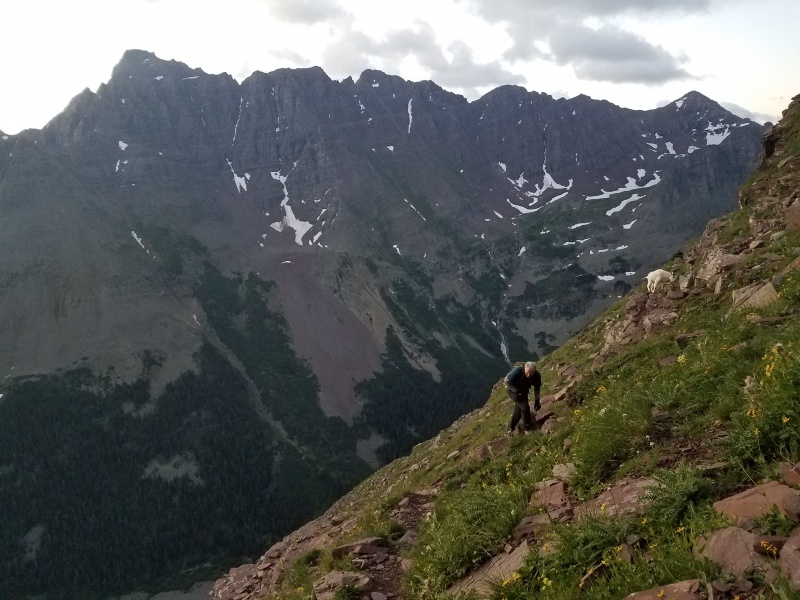
I’ve learned to compensate for some of these challenges through the use of poles and with the creative use of muscle groups in order to minimize oxygen starvation, while conserving leg strength during an ascent. For instance, I try to spread out the work required from my leg muscles by occasionally sidestepping upward (brings in the gluts), taking two or three smaller upward steps when a massive leg-press might suffice, and especially by using a modified (?) mountaineering rest step that I call a “mule step”. I don’t know if the “mule” metaphor really holds or not, that’s just what I call it – where I concentrate on using my calves and hamstrings to straighten my forward leg at the knee, the result being employment of mechanical advantage/leverage to reduce or eliminate the use of my oxygen-craving quads. It’s a very subtle, but extremely effective way of gaining elevation while minimizing exertion. Despite the fact that I’m no longer a fast hiker, these tricks help me maintain a descent pace for an extensive period of time given my age, and I believe my stamina is pretty good all things considered. For this route, however, I had elected not to not carry poles in order to minimize the chance of my pack getting snagged while down climbing, and that made it more difficult while crossing the rock glacier and ascending the first gully. So although our initial ascent up North Maroon’s NE Ridge was uneventful, it’s obvious that HB would have been way faster on his own, and yet, he kept me in his sights the entire way up – that’s just the kind of person he is. On a route like this promised to be, it is difficult to imagine being with a more competent, dependable partner. 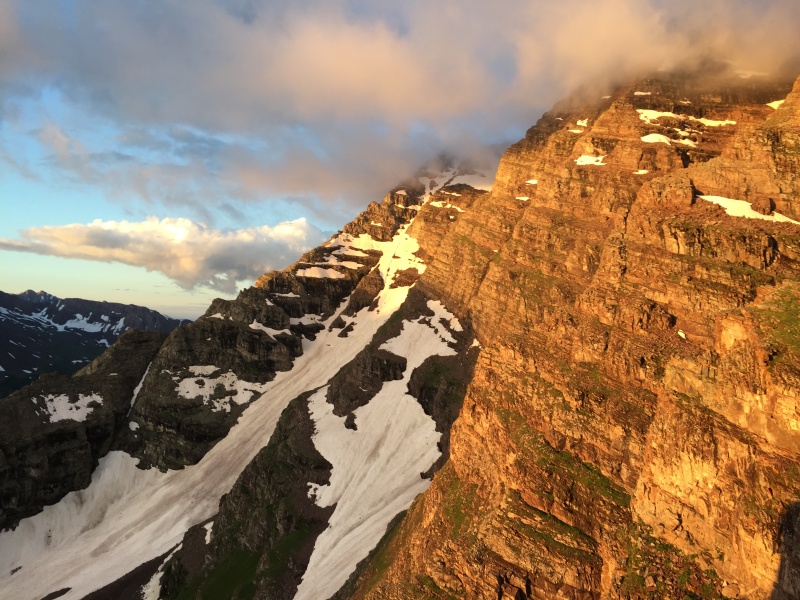
Another observation that I find interesting is that over the last 2 months on technical routes, I don’t seem to differentiate well between technical difficulty ranges, especially when the terrain is exposed - obviously this is at least partly due to my technical climbing background. What happens is that when I encounter exposed climbing I put the exposure out of my mind, and my concentration on movement becomes so acute that I don’t think about how hard the terrain might seem to someone else. In other words, everything becomes a “don’t fall here” thought process, and whether the difficulty is third, fourth, or low-fifth class is irrelevant. That’s not to say that when the climbing becomes technically difficult that it doesn’t register, but rather that it doesn’t register much until the difficulty gets above low fifth class. On the other hand, if we were doing these technical sections while roped, I would probably differentiate more, given the reduced urgency for total concentration. Hence, with one exception in this report, I won’t attempt to rate the technical difficulties. 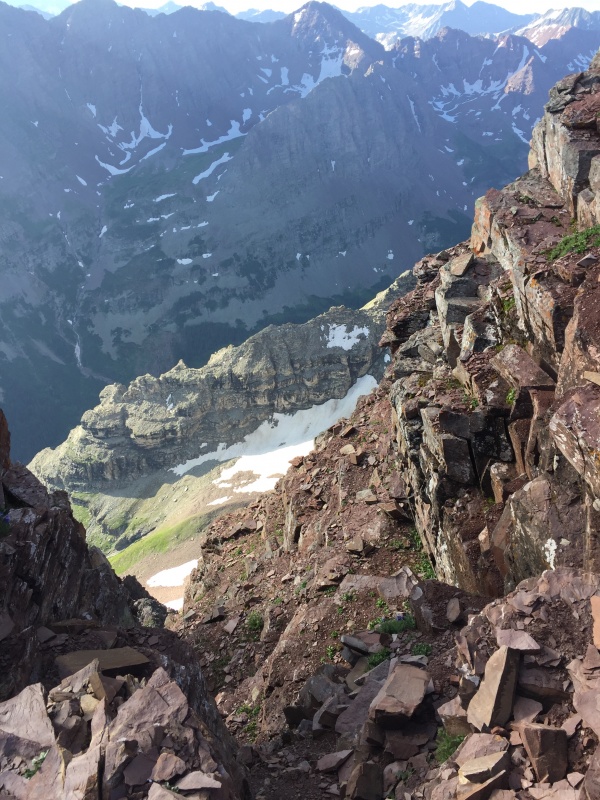
Eventually, HB and I reached the first technical challenge of the day, the “fourth class chimney”, which is about halfway up the upper NE ridge proper. For anyone without significant climbing experience I can see how this section would feel crux-y. The chimney is actually a corner with a wide-ish crack in the back. It’s not terribly exposed, especially for anyone who stays as far back in the corner as possible. However, because there’s a bulge (chockstone?) about halfway up it may force some people to lean out in order to reach up and over the bulge for holds, making the climbing more difficult. HB and I approached this differently, however, by stepping out and left to some large footholds on the left wall, right when the corner started to bulge. The advantage to climbing left is the immediate security provided by good feet, though the disadvantage is that the wall extends out into a more exposed position, so anyone going out left will need to need to be comfortable with the additional air. There’s a second potential disadvantage as well in that the footholds set you up so that you are looking right over and onto the ledge above, except that the ledge lacks obvious holds to use as you pull over, and is covered with thin, friable and loose flakes. This did not bother HB or me as we found enough to work with, but I wanted to provide these details for folks who might be less experienced. 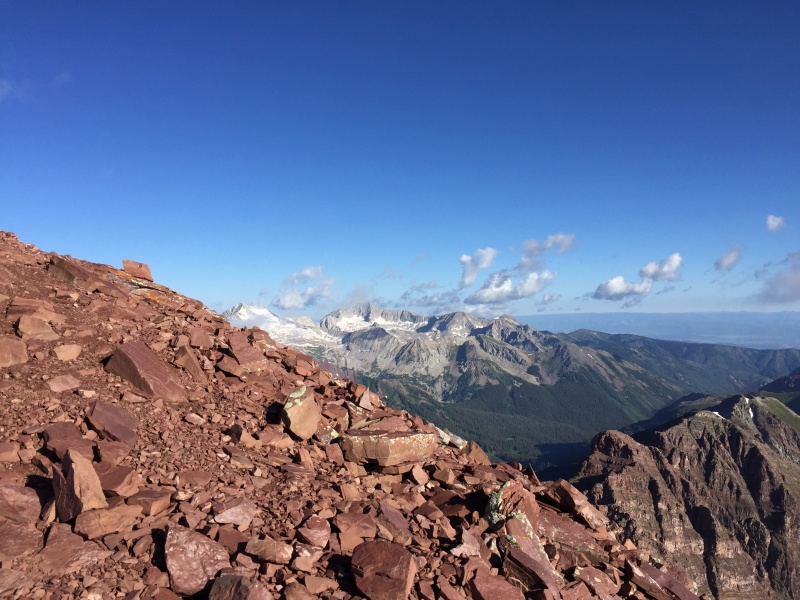
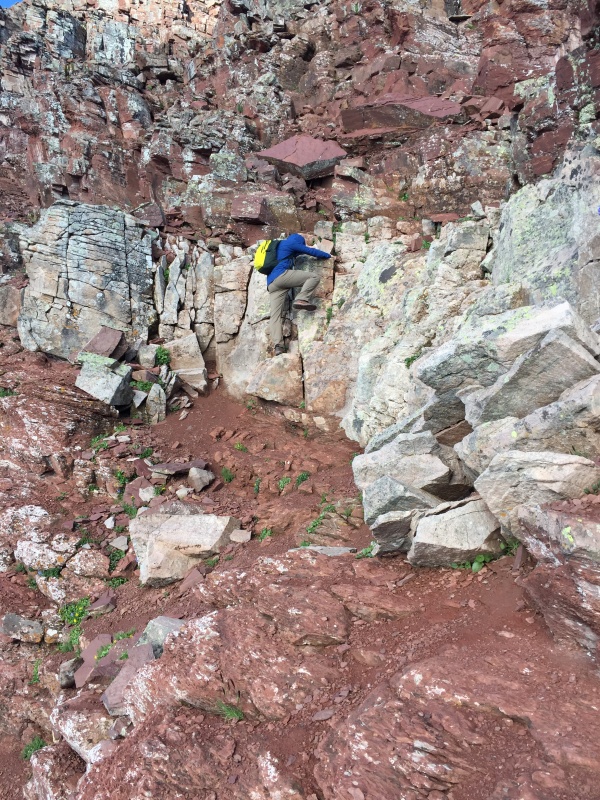
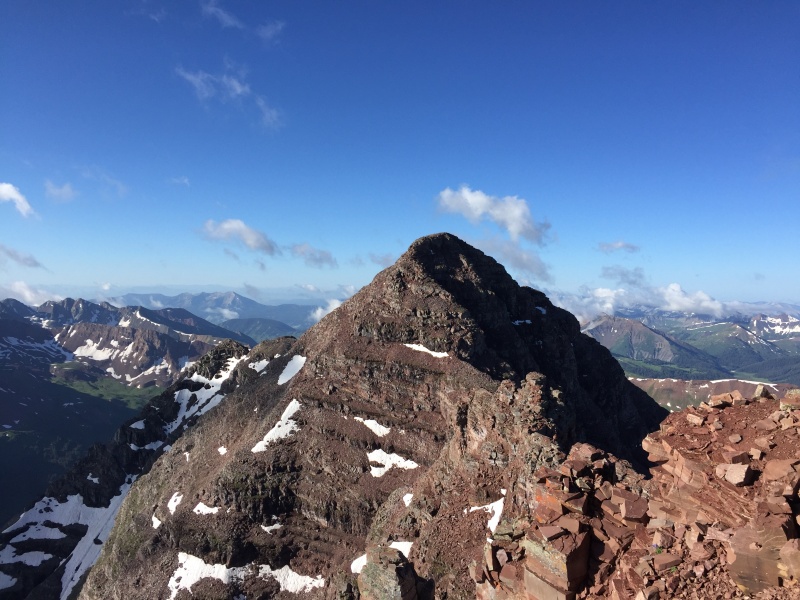
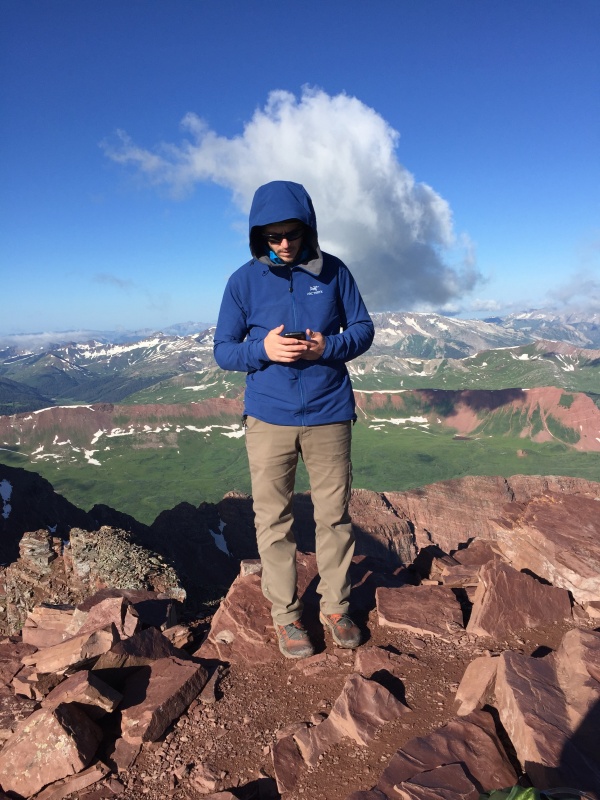
Once we reached the top of North Maroon, around 8:30, we knew the fun was about to start in earnest. I was slightly apprehensive at first, but that was partly because from our comfortable and secure sitting/resting position on the summit I could not see the route down. It was steep enough on the SW face that without walking up to the edge and looking right over, it might as well have been a vertical drop-off over there as far as I could tell. Finally, after what seemed like hours of procrastination, although in reality it was probably only a 15 or 20-minute rest, we started moving again. As we stepped down onto the SW face the route became visible at once, and any prior fear or apprehension that I held vanished for good. For me, personally, the most difficult part of the entire day turned out to be the decision to get started, and everything after that was easy in comparison. Obviously, the dangerous section was only beginning, but we could now deal with the challenges instead of anticipating them. From my point of view, our entire situation was condensed into three simple concepts: “this is exposed”, “find a secure route”, and “don’t make any mistakes”. Readers may find this trite, but my level of focus was so high once we started down, that my entire world was, out of necessity, entirely represented by those three concepts for the next several hours. 
Since HB has already covered the details of the first section down, I’ll instead say that the points I made earlier about not being good at differentiating technical difficulty below about 5.4, along with the “condensation” of my thought process, collectively enabled me to easily descend the steep stretch down the SW face of N. Maroon. It was exposed, but I didn’t care. It was loose, but I was careful to trust nothing and test everything. It was technical, but that didn’t matter as our view while descending provided clear cues of where the most secure travel could be found. Even the “Third Challenge” (in our case the first), with the two fifth class alternatives, hardly registered. It turned out that I went straight down the more direct, difficult route without thinking about it, though HB had a tougher time there given his shorter reach. Regardless, we were having fun as our adventure unfolded and we were making great progress. 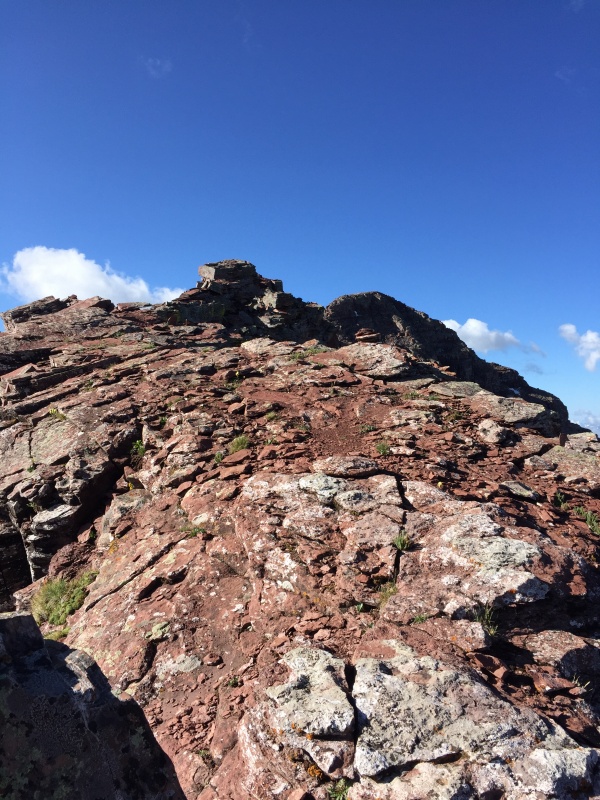
…Which brings us back to the crux. Except, before picking up that thread again I need to say that climbing rope-less on exposed terrain like this is dangerous. That’s obvious and should go without saying, however, for years I’ve heard climbers use the euphemism “spicy” when describing dangerous climbing situations, including the Maroon Traverse, and I heard it again recently from someone who, having just completed the Little Bear to Blanca traverse, was asked to describe what it was like. Yeah, I get it. “Spicy” makes it sound cool, is a way of rationalizing our decisions to engage in dangerous activities, and may help elevate some peoples’ egos. Fair enough. However, since I’m bothering to write about my experiences, I’m over 60, and I’m pretty much past pretense and ego at this point in my life, I want to be 100% straight up about this. The “Second Challenge” crux is a dangerous solo, and not “spicy”, regardless of which direction you are going on the traverse. Sorry if this seems overly soap-boxy, but I want to make sure no young climber who has logged hours in a climbing gym reads this and thinks – “wow, that geezer did this so it can’t possibly be that hard”. So with that off my chest and regarding the crux --- I had suddenly found myself in an awkward, off-balance position, with my hands above the bulging rock and both feet on a large foothold below. I couldn’t relax because to let go here would mean falling over backwards and down the east face. All of this was in addition to the loose rock in the bottom of the chimney that I knew I couldn’t grab, the crumbly and loose debris in the crack that continues out the bottom of the chimney, and hand-holds on the left side that looked tempting, but didn’t add much as far as helping me stabilize – sucker holds. As I discussed in my description of Blitzen, I’m not an experienced soloist, so what is especially interesting to me is that at this point, instead of panic or fear, my trad-leading head instinctively kicked in as found myself suddenly “under the gun”. This is the same thought process that occurs when roped climbing and I find myself facing difficult moves well above protection. The thought process goes something like: “don’t do anything sudden”, “don’t do anything that will make this feel less secure than it already is” (e.g., something even as subtle as straightening the leg that you are partially balancing on), and “take your time, stay cool, and determine the most secure set of moves possible”. On the surface, this is obvious; the key is controlling your fear so that you can figure out and execute the required moves safely. Since I’m writing this and maybe because you already read HB’s TR you know this has a happy ending. By using a combination of hand and fist jams in the debris-filled crack under the bulge, I was able to face directly east and gradually crouch, my left side to the face, until my center of gravity was under the bulge and I could lower my left butt cheek onto the stance where my feet had been previously. Now 100% stable again, it was just a matter of another low-fifth class move or two and I was quickly back on easier ground. Afterwards, in describing the difficulty of this section to a few friends, I realized the off-balance nature and difficulty of this downclimb might compare in difficulty to the start of the Wind Ridge in Eldo. I.e., the section immediately at the very beginning, about 10 feet up, where you have to awkwardly get stood up on a left leaning ramp, and it’s tough getting your feet where you want them, and it’s not all that secure. If you can imagine soloing up and down that, but with a different but equally weird and insecure sequence, where instead of the nice ledge and tree at the base there’s a 2,000 foot drop, and then imagine further that it’s all covered with grit and debris, then you have a general idea as to the difficulty of the “Second Challenge”. Finally, given the difficulty we experienced, I have to wonder if we were possibly off route. It’s tough to imagine that being the case as we saw no obvious alternatives, but the descriptions we had read during our preparation all described this as requiring “a few low-fifth class moves” – not exactly how I experienced it or described it here! The remainder of the traverse over to and up Maroon Peak consisted of more exposed third and fourth class, with the trickiest route finding being once we left the ridge and stepped onto the NW slopes of South Maroon. Although the hardest part of the traverse was behind us at that point, there was no letup in the difficulty or danger until we reached the top. 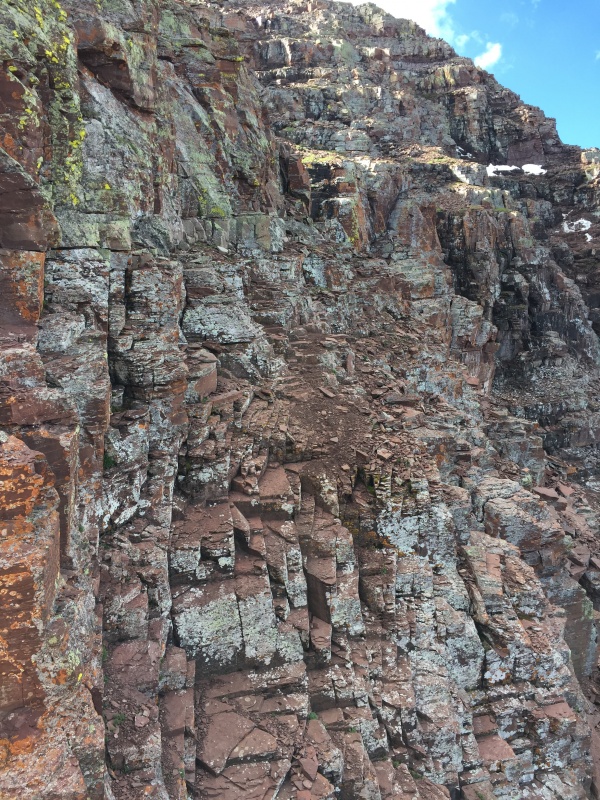
Upon arriving at the summit, HB and I were thrilled to have the north-to-south section behind us, and we relished the chance to relax for 30 minutes, chatted with others who had climbed the South Ridge, snapped pictures, and took in the unbelievable views. One noteworthy conversation involved good-natured bickering about whether, since we had left Denver a few minutes before midnight, our trip up to this point could be considered a “day hike” or not. The same couple we spoke to was also interested in the fact that we had come from the north, and they discussed the possibility of doing the south to north traverse right then, given the phenomenally beautiful day at hand. Unfortunately, they decided not to join us on our return, electing instead to “embrace the suck” (their exact words), and return back down Maroon’s South Ridge. As expected, our South-to-North return was a much easier undertaking. We made a few adjustments in the way we approached a couple of most technical sections and were able to move faster as a result, though I have to say that the crux section was still surprisingly tricky and required the same level of care used on our initial trip across. But to me, the highlight of the return trip was getting up onto the flat ridge above the crux, where we were rewarded with an incredible view of N. Maroon’s south and southwest faces. After hours of concentration and exertion, this platform provided a welcome place to decompress for a few minutes, and we were able to stop, gawk and snap some more pictures. 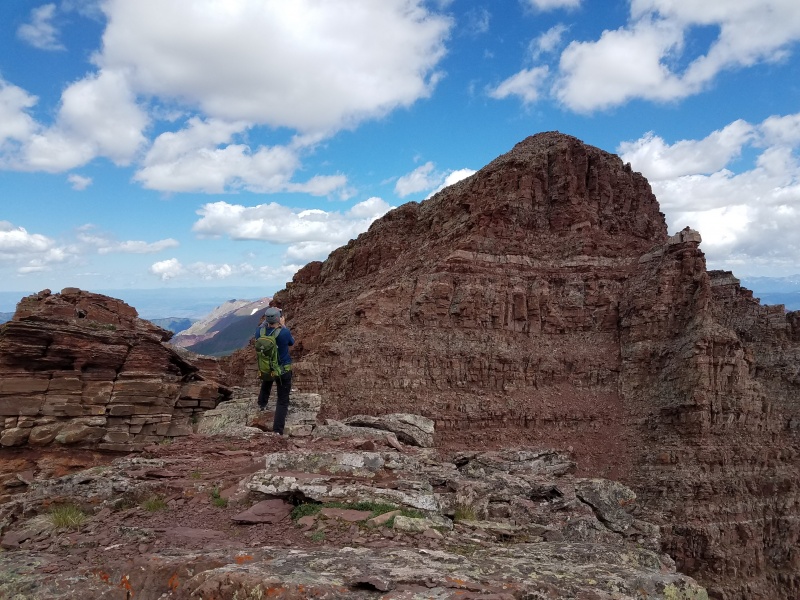
By the time we climbed back onto the summit of N. Maroon we were ecstatic. Now, finally released from the “this is exposed”, “find a secure route”, and “don’t make any mistakes” survival mindset, we were able to relax and prepare for the long trip down. Given our success up to this point, the trip down the NE ridge was especially tough since we were both looking forward to having the entire effort behind us. Hence, we had to force ourselves to concentrate just enough to get down, when we really wanted it all to be over with. Bottom line: it was a tough hike down and I especially missed my trekking poles once we got to the rock glacier and again when, in my exhausted and sloppy state, I managed to roll my left ankle less than a mile from the car. 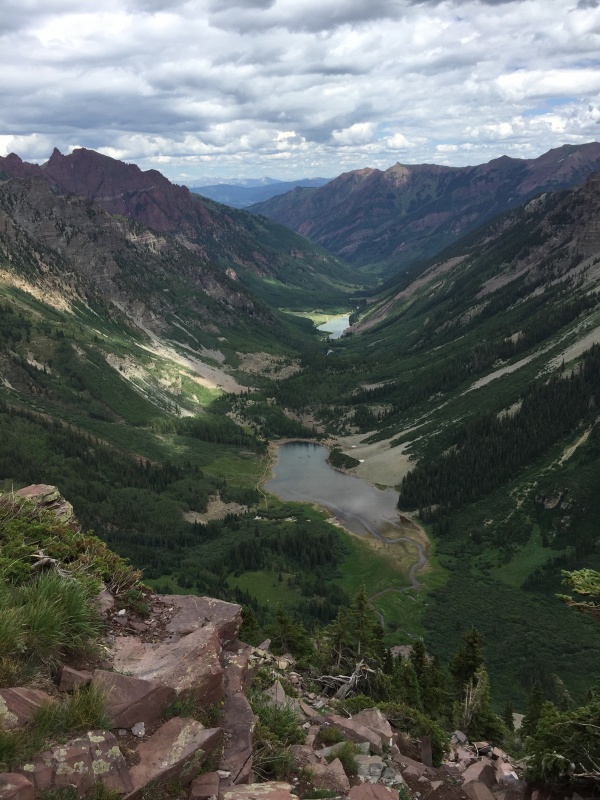
Fortunately for me, my minor struggles were largely neutralized by HB when he explained how he didn’t like talking to tourists on the way down when he was tired, and hilariously pulled his wrap up over the lower part of his face and nose, reminding me of a bank-robber! His tactic was effective and amusing; as I registered the looks on the many faces we passed along the lakes during the final stretch to the car. 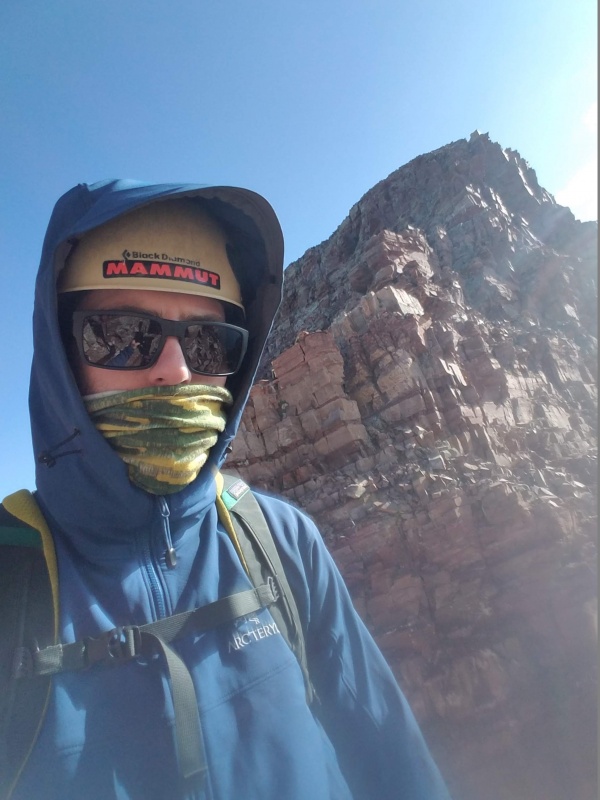
|
| Comments or Questions | ||||||
|---|---|---|---|---|---|---|
|
Caution: The information contained in this report may not be accurate and should not be the only resource used in preparation for your climb. Failure to have the necessary experience, physical conditioning, supplies or equipment can result in injury or death. 14ers.com and the author(s) of this report provide no warranties, either express or implied, that the information provided is accurate or reliable. By using the information provided, you agree to indemnify and hold harmless 14ers.com and the report author(s) with respect to any claims and demands against them, including any attorney fees and expenses. Please read the 14ers.com Safety and Disclaimer pages for more information.
Please respect private property: 14ers.com supports the rights of private landowners to determine how and by whom their land will be used. In Colorado, it is your responsibility to determine if land is private and to obtain the appropriate permission before entering the property.
